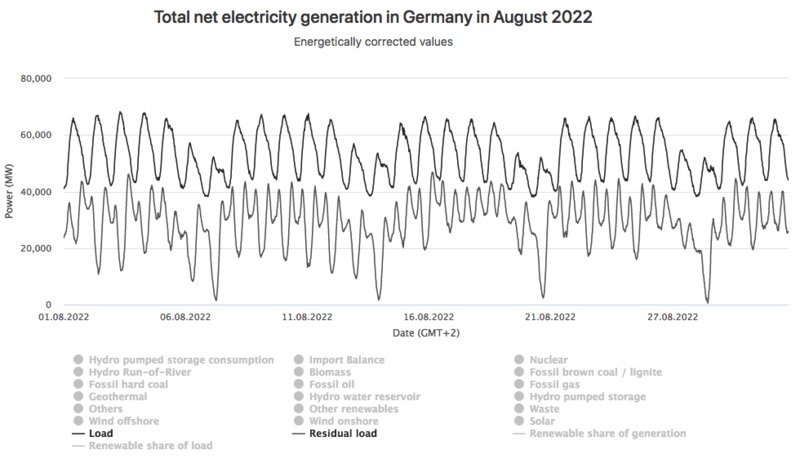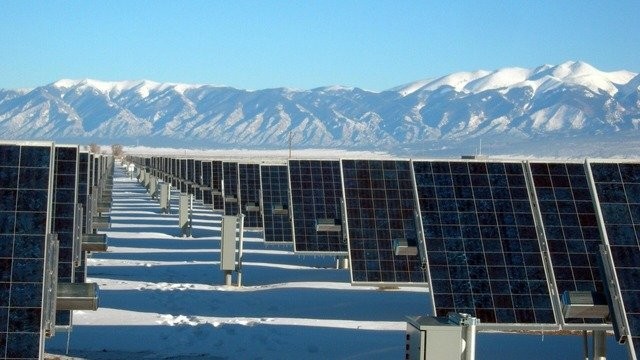The feed-in into the power grid for power supply consists of conventional energy sources, such as nuclear-, coal- and gas power, as well as renewable energy sources. The part of the electricity consumption that remains after deduction of the feed-ins by the two renewable energies wind and solar power is called residual load. This means exactly the remaining demand for electricity that cannot be covered by wind and solar power. The term "residual" comes from Latin word residuum and means "left behind as the rest".
Currently, it is still the case that the residual load is largely covered by energy from conventional sources. Other renewable energy sources to minimize the residual load can be e.g. power generation from bio mass.
How to calculate the residual load?
Residual load is the remaining electricity demand that renewable energies cannot cover. The graphic shows the actual load versus the residual load for August 2022. The example is taken from Germany, but tendential applicable for all countries using renewable energy.

The upper curve indicates the required load. We can see the demand peak at noon and can easily identify the weekends with less load.
Important is the lower curve. It shows the remaining energy which has to be generated by other means.
Why are there so huge fluctuations in the residual load?
Electricity demand is never steady. The amount of power users need at various times depends on a number of factors. For instance, demand is lower in good weather than in bad weather and higher during the chilly winter months than during the warm seasons. The use of electrical devices or the growing number of electric vehicles both during the day and at night have an impact on the demand for electricity. Therefore, daytime fluctuations of 60 GW to 70 GW are typical. The residual load is directly impacted by this.
Only as much electricity being drawn from the system as is fed into it is essential for supply security. If not, grid instabilities happen and smooth electricity transport is challenging. Because of this, there needs to be a constant balance between the input and output of electricity. The residual load varies depending on this, sometimes growing and sometimes shrinking.

Still, the two renewable energy sources, wind and sun, are mostly to blame for variations in the energy supply. Since these have a heavy reliance on the weather, it is challenging to predict their energy source potential, which fluctuates. The level of residual load and the significance of conventional energy providers also change based on how severe the grid fluctuations caused by these renewable energy sources are.
An additional problem is a silent night. There is a possibility that during weather- or seasonal darkness or due to continuous weak winds, security of supply will no longer be guaranteed because of the instability of electricity generation from solar and wind power. This leads to a significant increase in power outages.
Negative and Positive Residual Load
In the above graphic, we see that the residual load reaches at certain days (Sundays, noon) almost zero. Means, at that period only a little fraction of fossil generated power was needed.
If the residual load goes negative, the whole demand is covered and the remaining produced energy can be stored or converted for later usage. This will come in future, by now the main challenges are to transport the energy to the regions where it's needed. Sunshine and wind are not equally distributed inside a country.
Takeaway
The remaining demand for electricity that renewable resources cannot provide is known as residual load. It will take still some time until the residual load shifts permanently below the zero-barrier. Our technologies for demand site management and energy storage can support to reach this target.
Thank you for reading and stay safe.
You can leave a comment after the outage.
Editor's note: This article was originally published in September 2022 and has been updated for comprehensiveness.





All comments are moderated before being published. Inappropriate or off-topic comments may not be approved.